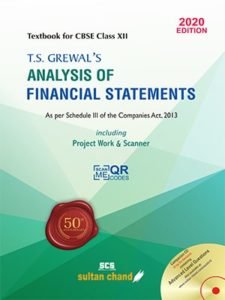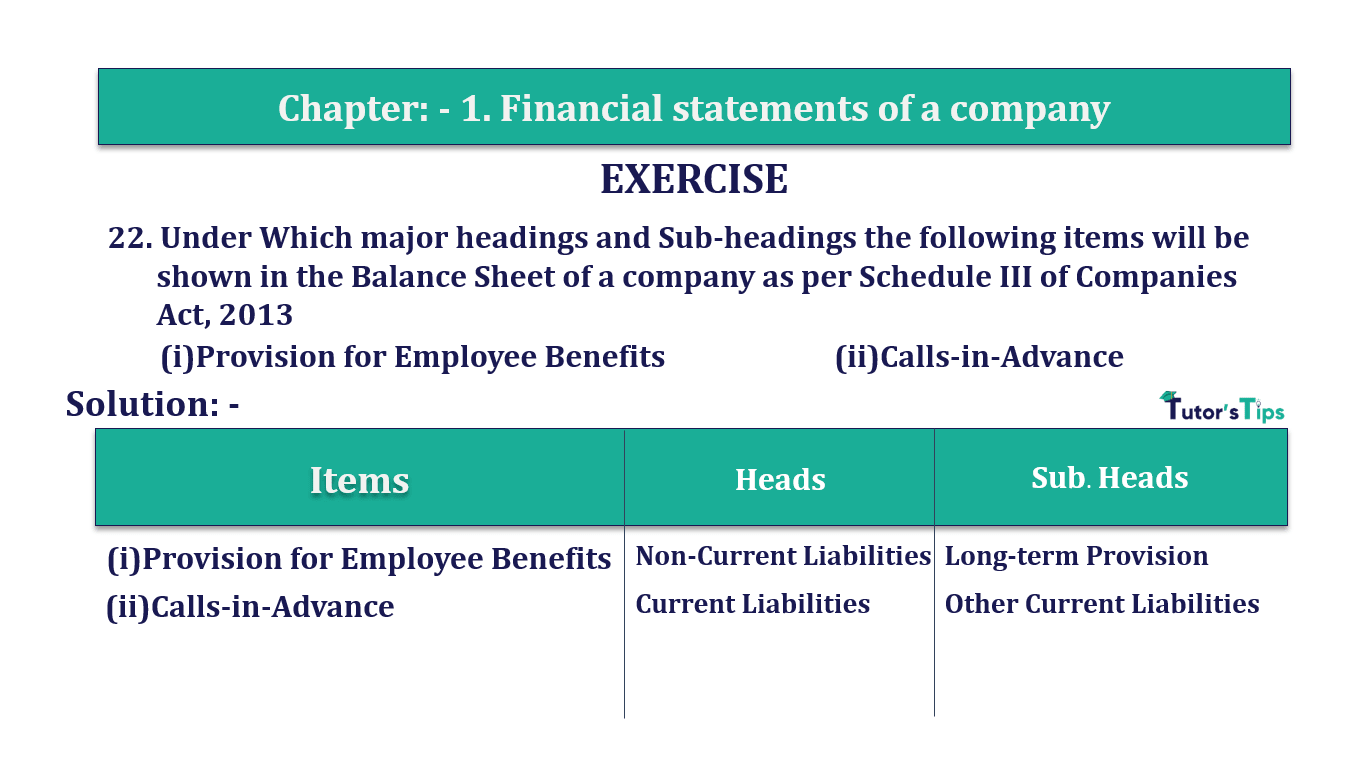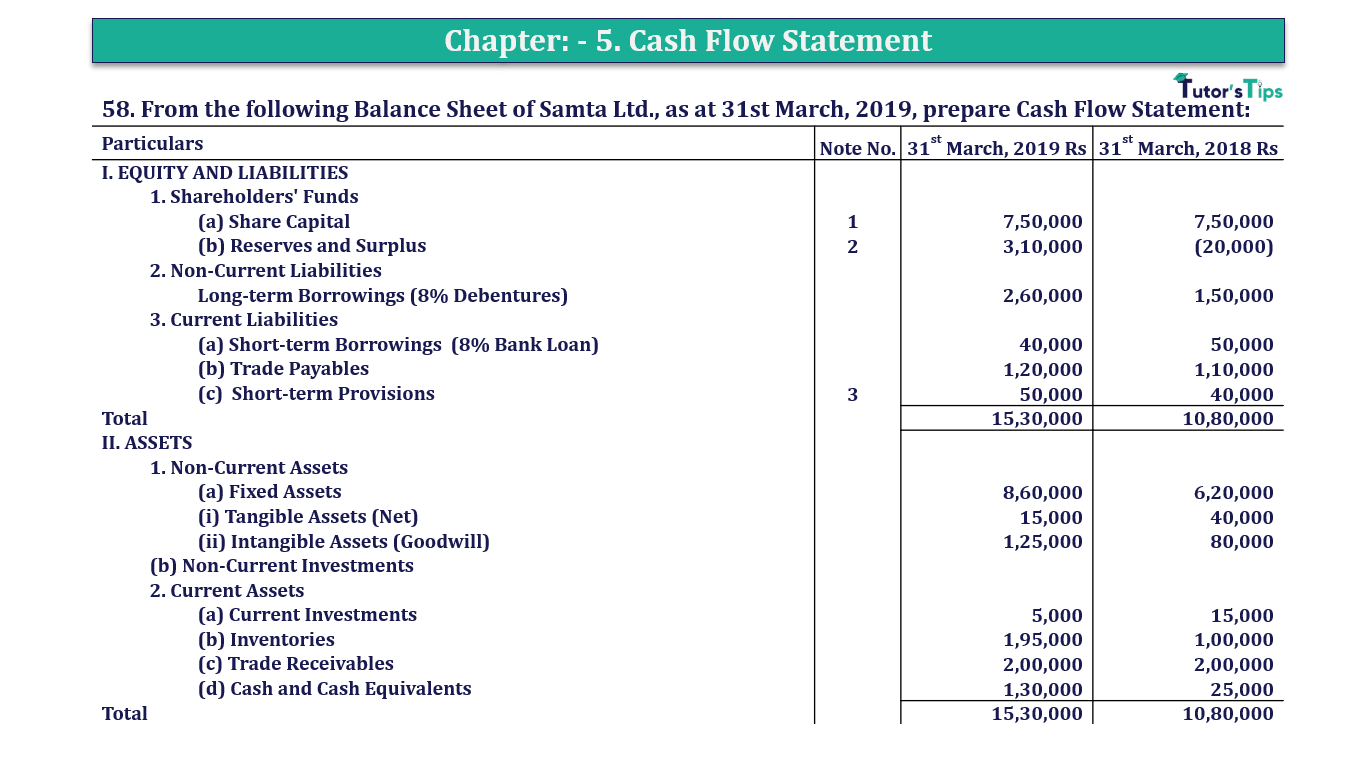Question 12 Chapter 4 of +2-B
Current Ratio and Quick Ratio
12. A firm had Current Assets of 5,00,000. It paid Current Liabilities of 1,00,000 and the Current ratio became 2: 1. Determine Current Liabilities and Working Capital before and after the payment was made.
The solution of Question 12 Chapter 4 of +2-B: –
The Firm paid off liabilities of Rs.1,00,000
which results in a decrease in current liabilities and current assets by the same amount.
After making the payment:
| Current Assets | =Rs.4,00,000 (Rs.5,00,000 – Rs.1,00,000) |
∴ Let Current Liabilities be = (x – Rs.1,00,000)
| Current Ratio | = | Current Assets | = | Rs. 8,75,000 | = | 2 |
| Current Liabilities | Rs. 3,50,000 | 1 |
| Rs. 4,00,000 | =2x – Rs. 2,00,000 |
| Rs. 6,00,000 | =2x |
| Therefore, x | =3,00,000 |
| Current Liabilities after payment | = | – Rs.1,00,000 = Rs.2,00,000 |
| Working Capital after Payment | = | Current Assets – Current Liabilities |
| = | Rs.4,00,000 – Rs.2,00,000 =Rs. 2,00,000 | |
| Current Assets before payment | = | Rs.5,00,000 |
| Current Liabilities before Payment | = | Rs.3,00,000 |
| Therefore, Working Capital Before Payment – Current Assets – Current Liabilities | = | Rs.5,00,000 – Rs.3,00,000 |
| = | Rs.2,00,000 |
Therefore, goods worth Rs.1,75,000 must be purchased on credit to maintain the current ratio at 2:1
Balance Sheet: Meaning, Format & Examples
Thanks, Please Like and share with your friends
Comment if you have any question.
Advertisement-X
Also, Check out the solved question of previous Chapters: –
T.S. Grewal’s Double Entry Book Keeping +2 (Vol. I: Accounting for Not-for-Profit Organizations and Partnership Firms)
- Chapter No. 1 – Financial Statement of Not-For-Profit Organisations
- Chapter No. 2 – Accounting for Partnership Firms – Fundamentals
- Chapter No. 3 – Goodwill: Nature and Valuation
- Chapter No. 4 – Change in Profit-Sharing Ratio Among the Existing Partners
- Chapter No. 5 – Admission of a Partner
- Chapter No. 6 – Retirement/Death of a Partner
- Chapter No. 7 – Dissolution of a Partnership Firm
T.S. Grewal’s Double Entry Book Keeping (Vol. II: Accounting for Companies)
- Chapter No. 8 – Company Accounts – Accounting for Share Capital
- Chapter No. 9 – Company Accounts – Issue of Debentures
- Chapter No. 10 – Redemption of Debentures
T.S. Grewal’s Double Entry Book Keeping (Vol. II: Accounting for Companies)
- Chapter No. 1 – Financial Statements of a Company
- Chapter No. 2 – Financial Statement Analysis
- Chapter No. 3 – Tools of Financial Statement Analysis – Comparative Statements and Common- Size Statements
- Chapter No. 4 – Accounting Ratios
- Chapter No. 5 – Cash Flow Statement
Check out T.S. Grewal +2 Book 2020@ Official Website of Sultan Chand Publication








Leave a Reply